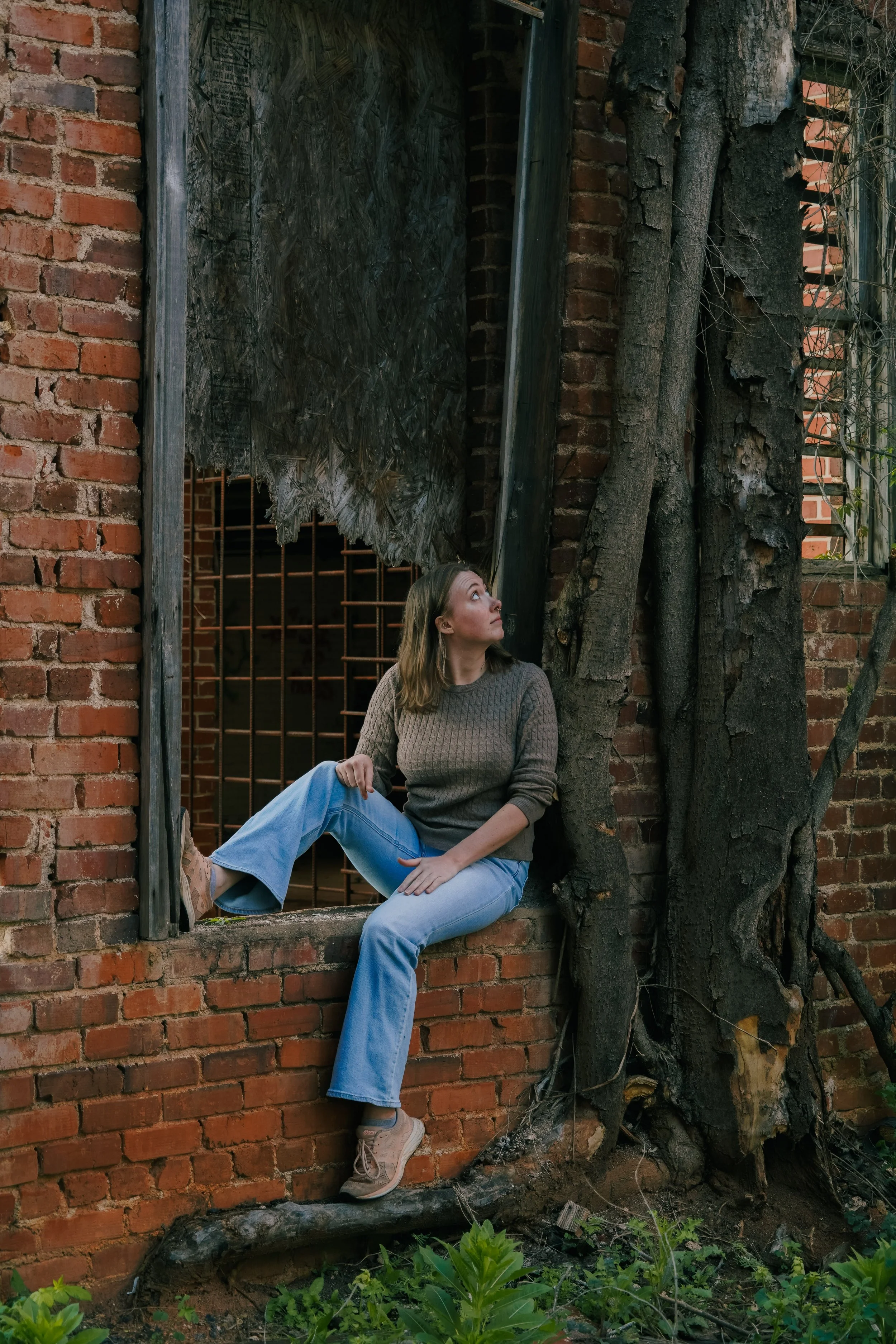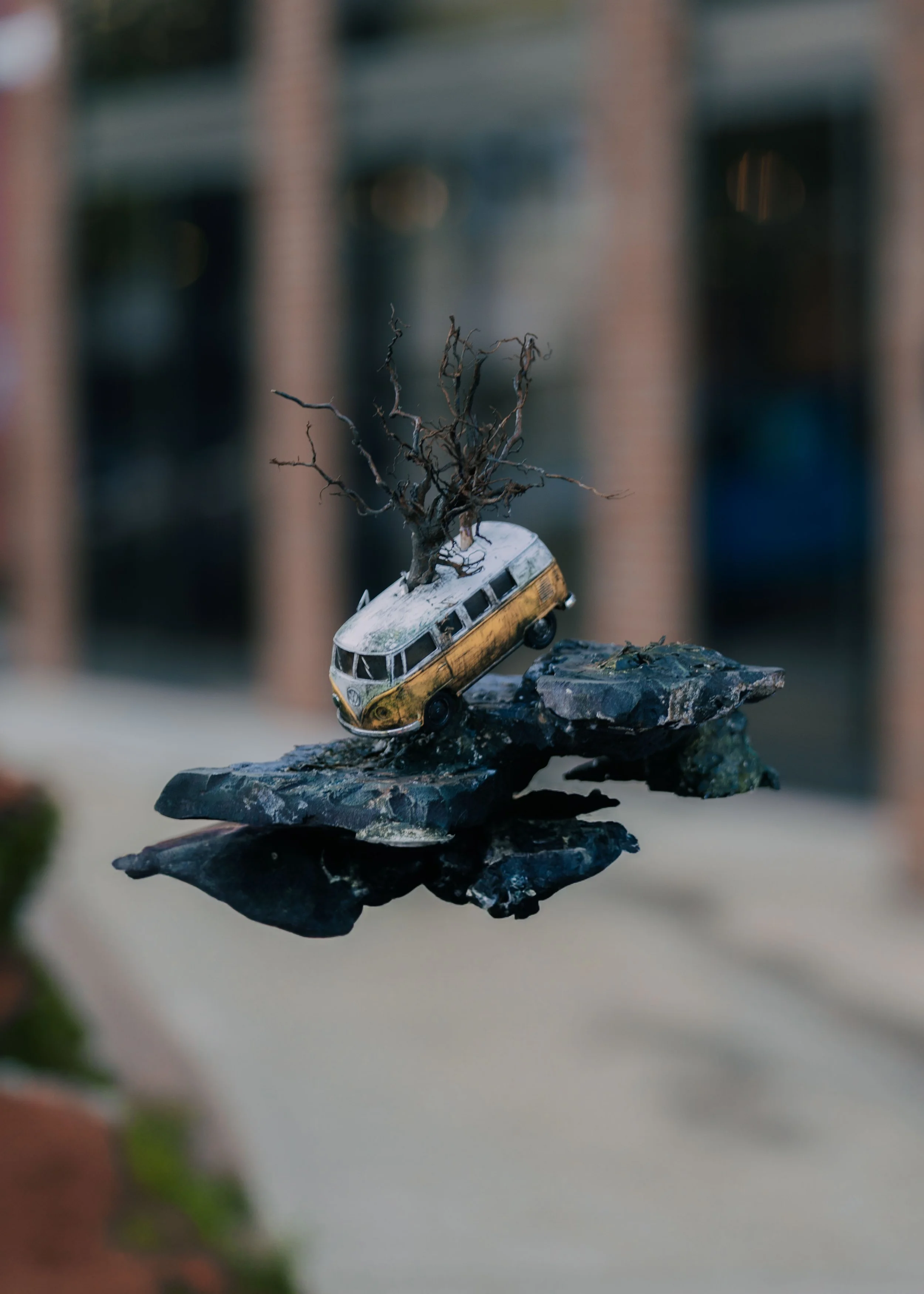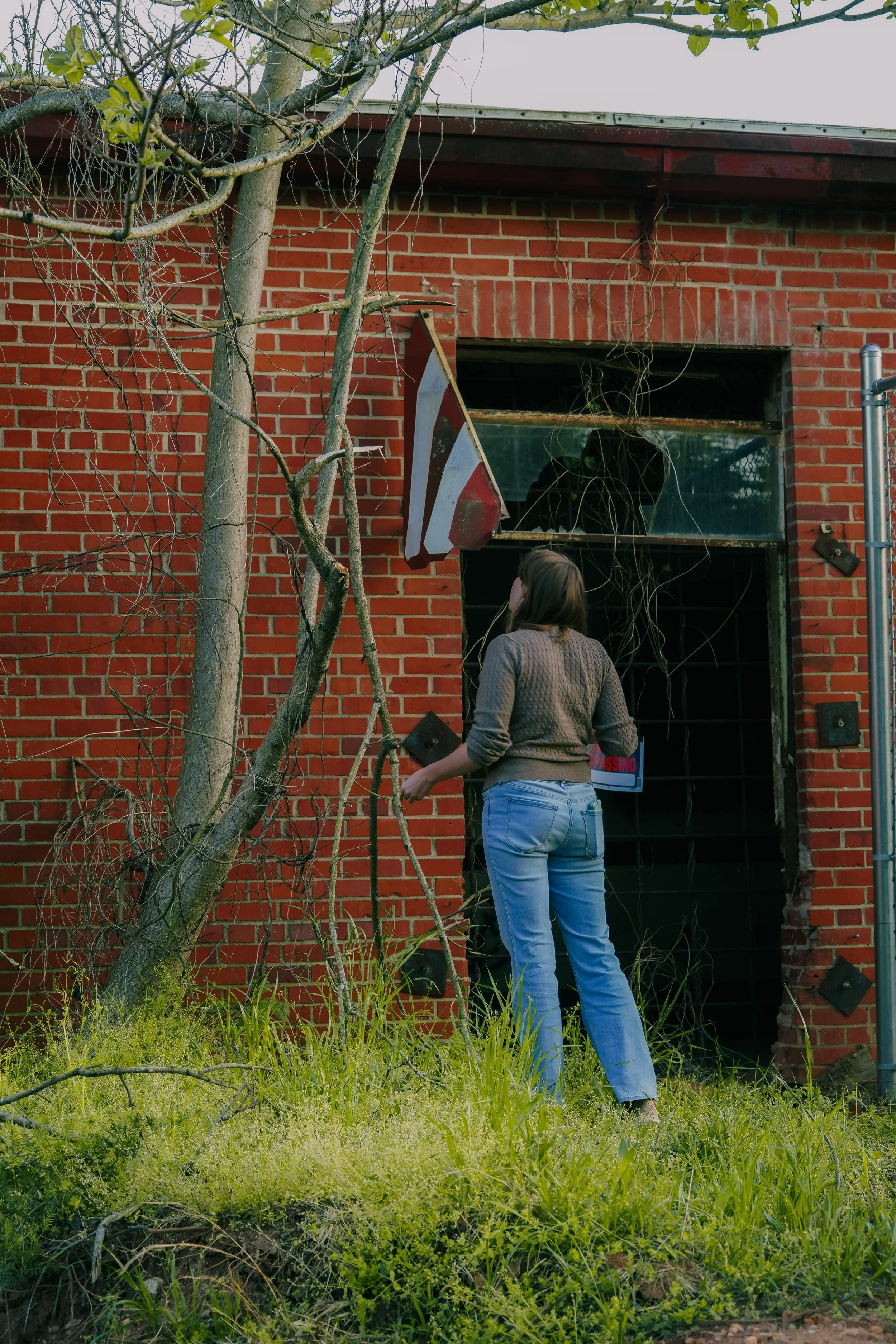Abigail woodard on capturing the
transience of life through sculpture
The beautiful thing about art is that it is in everything. Art is intertwined within the quiet transition of time from past to present to future. It peers at us from the seemingly mundane visual of paint peeling off the side of a quaint farmhouse. It resides in the quiet laughs in everyday conversations shared with friends. Abigail Woodard, senior Graphic Design major, aims to capture this very idea within her work: art is found even in the quietest of places–we just have to be willing to look for it.
Naturally, Abigail’s love of art began at a very young age. “My grandmother owned a doll shop and I would go over to her place and just see all of the little tiny details, and that made my imagination wake up.” Her love of painting and drawing as a child led her to pursue an art-related degree, which landed her in the Graphic Design program at Anderson. Abigail’s introduction into the program quickly grew her love of her artistic medium of choice: sculpting. “During [my] graphic design experience, I found that I really loved the versatility and narrative capacities of sculptures, so I really started heading in that direction.” Abigail uses a combination of hand-made and resin-printed objects to create beautifully intricate miniature scenes centering around anything from rustic, lived-in farmhouses to people sailing on the ocean. She aspires to create worlds that people will resonate with in some capacity. “Specifically in sculpture, I want people to get into the world [I created] and invest themselves and lean in close.”
Abigail’s inspirations center largely around the idea of time passing and the beauty that comes from change. Her favorite of her creations depicts a scene of an old farmhouse sitting on a hill beside an overgrown pumpkin patch. Abigail’s use of rust and peeling paint effects throughout the scene beautifully captures the essence of what it means for a home to bear the weight of years past and be weathered by the seasons and still possess the ability to hold new kinds of beauty and character within its walls. Creating this piece helped Abigail process the emotions that come with the passing of time and having to come to terms with the inevitability of change. “You can love a place so much and it’s going to change regardless, but even that change is good and it shows new growth, but your memories are still kind of entrenched in the idea of it being this perfect snapshot of reality.”
Abigail has many passions, one of them being storytelling through her art medium. “Even if it’s not a 3-act cinematic masterpiece, I still want to tell a story of the people living in a miniature or maybe a story that a viewer could look at and then project themselves [into].” Much of her inspiration comes from stories that she has read, and she aspires to create the same feelings within her viewers as the ones instilled in her when she reads. “I’ve been very shaped by literature my entire life. I’ve always loved telling stories. [Sculpting] is just another form of storytelling.”
For Abigail, art is not only something she has fun with, but it also serves as a therapeutic process for her. “I think my pieces come from a place of whatever I’m struggling with at the time. Maybe it’s: ‘This is really hard; I’m going through this change, and therefore I’m going to make a piece about it,’ or maybe I just like the idea of painting rust.” She wants her pieces to reflect what she is feeling during her creative process. “I don’t want the pieces to ever feel dystopian, but they’re supposed to feel older and they’re supposed to come from a very specific memory or experience that I had and I’ve been trying to get people to relate to, which is hard.”
Her love and excitement for her work is evident in the way she talks about her processes, and she aspires to create things that instill those same feelings within the hearts and minds of those who interact with her work. “I’ve had a lot of people, when they’re looking at my work, be like, ‘how do they get up the side of this building?’ or, ‘how does this gas station operate when it’s on top of train tracks?’ or, ‘how does a dock with no water work?’” She loves the idea of creating a sense of wonder within people through her work, and she wants her pieces to urge others to think differently about situations than they did before. “Once you allow yourself to kind of be pulled into that world, you start to visualize how people would move around in a scene, and I think that’s really exciting for me. It’s a lot of wonder and joy and I want to instill that.”
In the future, Abigail plans to work at a graphic design firm with hopes of having her work featured in a number of art shows, but her vision of success for her life has little to do with career accomplishments. “My idea of success is seeing people that I love and getting coffee and having a backyard with a garden.” Abigail’s love and fervor for life is deeply reflected not only in her art, but also in what she values and loves about being human. “In my mind, success is having beautiful, wonderful, supportive and God-loving friends around me…it’s having a sunlit afternoon where I get to relax for a little bit.”
Abigail’s advice to creatives stems from a large source of inspiration for her work: emotion. “The whole idea of art is that you’re just making something out of all of the tangled-up emotions that you’re feeling. So don’t worry about anything else. Just create.” She encourages others to embrace their differences and to use their unique experiences to create art that can only come from them. “Your story is not going to be the same story as the person next to you, and that’s okay.”








